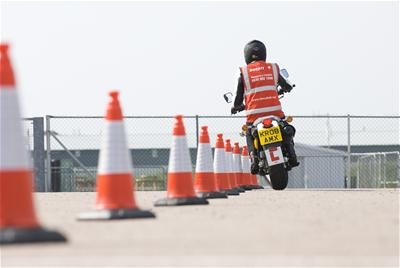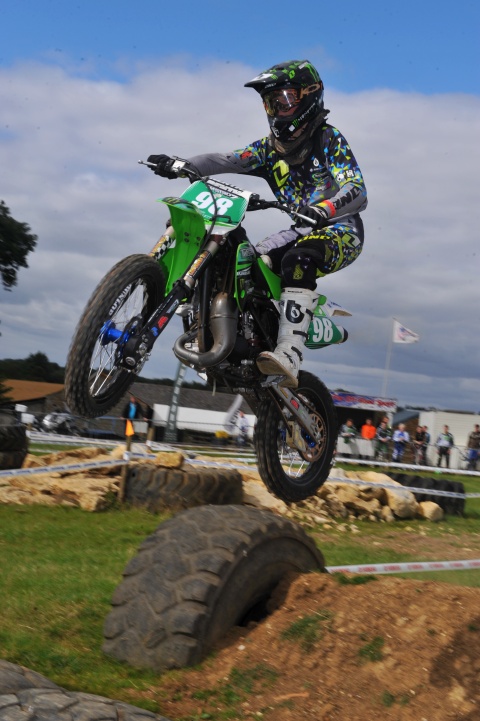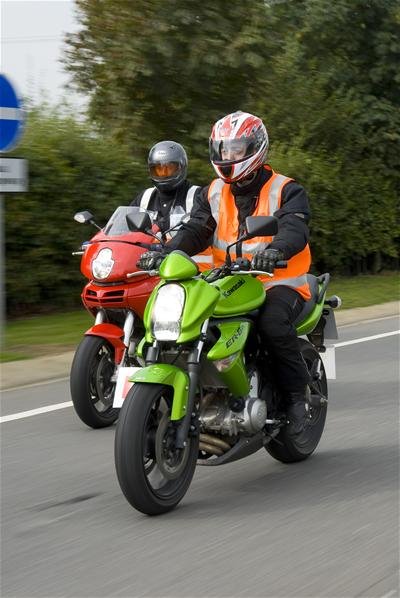UK Motorcycling, in Good Health?
John Newman takes the pulse of motorcycling
John Newman
Butterflies have re-emerged this summer along with more motorcyclists. I know the tyre companies, petrol vendors in the UK and Europe, and Andy who services my bikes will have felt the benefit. Plus no doubt, clothing, equipment and accessory shops and websites, and peripheral businesses such as those who put the bacon sandwiches and chips etc across the counter.

Hastings 1066 motorcycle event
A half way decent climate is one of the necessities for the positive health of motorcycling, but what of the other influences, effects and changes on the myriad aspects of our motorcycling lives in the early twenty first century? Here are a few thoughts about the health of modern motorcycling.
The State of the motorcycling nation
About eighteen months ago my local dealers, Earnshaws of Huddersfield: a motorcycle business which has been in existence since the early part of the last century, converted almost fifty per cent of their considerable floor space to the sale of bicycles. Perhaps this was a smart move given the almost stratospheric rise of riding on two wheels without the aid of an engine; driven by the achievements and successes of British track and road cyclists, and the popularity of mountain bikes – as seen on passing car racks. But does this also reveal clues about the state of motorcycling?
Over the past few years motorcyclists, dealers and the businesses that service us, have not only had to contend with very cold winters and very wet summers, but the prolonged recession has hit what is primarily in the UK a leisure pursuit, hard. New bike registrations are down. We've seen dealers go under, notably the George White colossus. Well known names such as Hein Gericke teetered on the brink of extinction in the UK; and the Frank Thomas brand was rescued by J&S Accessories.
Flow Charts!
We have also been hit with licence legislation restricting the age of riders in relation to the size of bikes that can be ridden: with the latest being introduced in January of this year. The Department of Transport website provides details and flow charts to guide a person through this new regulation warren. Flow charts! Five would you believe, on how to obtain the various licences. A Byzantine bureaucracy enfolds the whole business.

Archway project South London
It's not an easy path to navigate so here's a reminder of how the main components affect people who want to start riding:
At sixteen years you can drive a 'moped' on L plates up to 50cc once you have passed a CBT (Compulsory Basic Training). Valid for two years. You can take three tests – Theory plus Module One and Two to get a non-learner licence.
From seventeen up to 125cc is permissible. But you also have to go through the same tests to obtain a non-learner licence.
At twenty one it's possible to undertake a Direct Access Scheme and ride a machine restricted to 46.6bhp.
From twenty one to twenty three years you can ride an unrestricted bike if you pass another test on a bike 595cc or above, and have held a full A2 licence for more than two years.
At twenty four you could undertake the whole licence programme and go direct to an unrestricted bike.

Motorcycle training
The politicos who plotted this course would no doubt maintain that it is devised to help riders become safer through a graded power system (despite Europe wide protests at the legislation we lost this one). So are there any rays of light penetrating the gloom?
Off Road Riding
Last year the Motorcycle Industry Association (MCIA) organised an off road day, involving the major manufacturers making their bikes available to motorcyclists who had not ridden away from paved roads before. It was very popular and the 100 places were readily snapped up.

MCIA Off Road Experience 2012
This year they repeated the exercise, and expanded with 400 places up for grabs at £15 for the sessions, tutored by Moto X champion Dave Thorpe and others. The booking website almost crashed and the weekend was sold out within hours. This is impressive stuff and helps to hook riders into wider biking activity and enhanced skills and awareness.
Another MCIA initiative that has been banging the drum for motorcycling is the Get On scheme. This enables people who have never ridden a motorcycle or scooter before to receive a free riding session through a local training school. With the aim of introducing them to the pleasure and convenience of powered two wheel travel.
Funded by the industry since 2009, it has so far put more than 45,000 people through an initial riding experience. The next phase began this summer with a target of recruiting another 24,500 people to take up the offer, and they will be taking Get On on the road, so to speak, with promotions at places such as major shopping centres and football stadia, where maximum numbers can be reached.

Success!
The
Get On 'conversion rate' is impressive: 86% of those who book turn up for their free ride; 83% of those book further training; and 51% request contact from their local dealer. With the existing market ageing and declining it's vital that new younger riders are brought in to motorcycling.
For further information go to
www.mcia.co.uk or
www.geton.co.uk
Health and trends
The baseline measure of motorcycling health is through new registrations i.e. sales: statistics are produced month on month and aggregated annually. These statistics also indicate general trends in terms of what types of bikes are selling. As might be expected, the general economic indicators and the amount of disposable income we have available are the keys to a thriving market. Lightweights and scooters for the ride-to-work market provide a decent turnover too when cash is available.
2009 is when the effects of the economic crisis caused by banking failures began to hit working people and consumers. It wasn't a bad year for new motorcycle registrations with almost 95,000 going onto the road – 112,000 if scooters are included. But in 2010 the numbers fell to 81,000 (96,000 including scooters), and as might be expected the sales numbers have yet to recover.
Within these statistics there are indications as to the direction that motorcycling is headed. The Supersports category, which is defined as those bikes designed to replicate racers, has seen a steady decline. Sport/touring bike numbers have dipped and then rallied, and naked and custom bikes have held on to their share of the market in this difficult period. But the category in which sales have done reasonably well is Adventure Sports; though we are counting in several hundreds year on year, rather than thousands.
Perhaps this trend shouldn't be a surprise. Although the 'Long Way Round' effect has unwound, it has stimulated a market for people with enough disposable income who no doubt either plan to or have undertaken long(ish) overland trips; either independently or with one of the group tour companies that have expanded over the past ten years or so.
Freedom
Motorcycling has always been about freedom and the unconventional, and this desire to explore more of the world and get off what is just a small island part of it is admirable and understandable.
It's not necessary to spend a five figure sum to do it either - although BMW and Triumph will do their best to persuade you otherwise. The indefatigable Austin Vince and his pals have rounded the globe on bikes costing mere hundreds and the seemingly indestructible traveller Simon Gandolfi is riding a 125cc from India to the UK at the age of eighty.

Austin Vince Mondo Sahara
Crossing the channel a couple of times this summer, and attending a couple of the larger classic bike events really emphasised the fact that the majority of us are the other side of 40...50...60. The classic and retro scene is healthily propped up by this crowd, as anyone who tuned in to the ITV4 Classic TT coverage will have witnessed.
Like other specialist interest groups motorcyclists join together in clubs and riding clusters. But unless directly threatened we have never prioritised the need for consistent political nous and clout to defend our chosen leisure and sport activity against the slings and arrows of anti motorcycling adversity. The two national organisations which seek to represent us are on a downward trajectory. The BMF haemorrhaging membership, and MAG going through one of its periodic organisational upheavals. Is the general turning away from things 'political' having a more wide ranging effect than we realise?

Archway project
With the exception of the MCIA initiatives mentioned earlier, the complacency of the motorcycle trade to the problem of decline reminds me of the 'it'll never happen to us' attitude of the former British motorcycle industry. Hey dealers - when was the last time you got out of the showroom with your shiny bikes, and mounted a display at the local shopping centre, county show, or student campus? Motorcycling needs to talk to more of the population and not just to ourselves.

Brighton Bikers Night
When we attend large shows, major race meetings, rallies and big ride out events like the Ace Cafe Brighton Burn Up etc. It's easy to delude ourselves that motorcycling activity is vibrant, participtatory, and will continue that way into the future. But unless those of us involved in motorcycling are able to reinvigorate this ailing patient, the pulse will become weaker and the life blood will drain away.
John Newman for
Wemoto news








